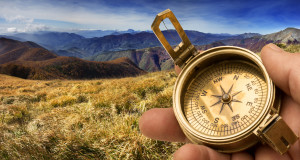 I love playing treasure hunts with kids, and so do they. Weekends and holidays are the perfect time for them. However, traditional treasure hunts require adults to hide items and write clues, which can take forever. Not all of us have the time or resources available to do this. I have a clever way that is still fun but also easy to run.
I love playing treasure hunts with kids, and so do they. Weekends and holidays are the perfect time for them. However, traditional treasure hunts require adults to hide items and write clues, which can take forever. Not all of us have the time or resources available to do this. I have a clever way that is still fun but also easy to run.
1) Write a big list of different things kids can find, different things that are all around them. For example: a purple heart, an animal (for older kids it could be a mammal, reptile etc.), a blue flower etc. You might also like them to help you create the list.
They can begin with easy things so they are hooked in and it feels achievable. Then stretch the complexity so it becomes more challenging.
They may not see all the things on the list but that is part of the fun. I include treasure items like shapes, words, numbers and maths facts (tailored to the age group from a prime number for older kids, to an even number for early years kids). The possibilities are endless.
By changing the words you use on the list, you can increase the learning, such as, find a cube instead of a square (this takes them from a 2D shape to a 3D shape). This kind of learning is great as it allows them to see the importance of learning the names of things. Experiencing learning in real and purposeful ways makes them more accessible and relevant to children – they become more than facts to memorise.
2) To increase the incentive to play and learn, you can give them ten or twenty cents for each item they find. You can change this to how many items will be on your list, their complexity to count, your child’s learning strengths, your budget and parenting beliefs. Ten cents is easier to work out than twenty cents. You could add five cents in and work on their five times tables.
Using money fosters lots of great maths talk, even how much money they have made and how much more they could make. Children in the early years will need help with this. Ten cents will be easier to count if they know how to count by tens. I recommend counting up to a dollar and then start counting again from ten – most may not be able to understand that 120 cents is the same as $1.20.
I like to pay with silver coins as it is a great way to get rid of my spare change, but more so, they can see and play with the coins. You may want to have them count it up and talk about different ways you could make the total, and add in coins and a note if needed.
If your child starts to get confused step it back, and remember counting with money and understanding money takes time.
Note: The game normally costs me between $5-$8 and has taken children one to two days to play. You don’t have to use money at all, or you could use a different reward or no reward as the game is its own reward.
3) I like to add that the kids need evidence for each item they find. I ask them to take a photo if possible (or show a trusted person). They might want to create a digital treasure hunt scrapbook with the items they find. Be warned that some kids will pretend they have found things, when they haven’t, so proof is needed. This allows the game not to finish too quickly, but also allows for more learning to occur. You may choose to allow them to draw it, or even write down the date, time and location as another way to increase learning. Again, remember to make it appropriate to their learning level – you can always ask us a question and we can help with that.
Make the game yours and change it to meet your own needs. Think of it as a seed. What tree will you grow?
Happy treasure hunting!
